What part did the American revolution play in Alabama?
Join our Mailing List
Sign up for news on upcoming events near you and around Alabama.
Sign up for news on upcoming events near you and around Alabama.
In 1780, Fort Charlotte, built 60 years before by the French, was under the control of the British. In support of the colonies, Spain had entered the war in 1779. On March 10, 1780, Spanish General Bernardo de Gálvez attacked the fort, seeking to control the important port town and thwart the British threat to its Louisiana colony.
For three days the battle raged until, on March 13, when the British surrendered, retreating to Pensacola. Gálvez had plans to follow and attack the British in Pensacola but was unable to raise reinforcements. Instead, on Jan. 7, 1781, British forces moved in to attempt to recapture Fort Charlotte in Mobile. The Brits were quickly defeated, again retreating to Pensacola.
Fort Charlotte, called Fort Condé under French rule and Fort Carlotta under Spanish rule, was demolished in the 1800s but a smaller replica of Fort Condé was built on its foundation and is now a tourist attraction.
*At the time of the battle, the land was not called Alabama. It was in West Florida.
Erected by the David Lindsay Chapter, NSDAR, Alabama Historical Association in Honor of the Revolutionary War Soldier and Shelby County Pioneer.
The Alabama SAR donated the Patriot Doors at the American Village Colonial Chapel, with brass plaques listing each patriot ancestor of SAR members.
The Alabama DAR placed a marker at the National Veterans Shrine at the American Village in honor of the 250th birthday of the United States.
The Daughters of the American Revolution (DAR) monument at the Fayette County Courthouse honoring participants in the American Revolution.
The DAR memorial honoring Revolutionary War patriots buried in Jefferson County.
The DAR monument honoring the 18 Revolutionary War soldiers who resided in Montgomery County.
The DAR monument in Veterans’ Park honoring Revolutionary War soldiers/patriots buried in Madison County.
A marker placed by the Sons of the American Revolution to mark the Siege of Fort Condé in Mobile County, which took place in 1780.
A monument to Spanish General Bernardo de Galvez, located in Baldwin County’s Centennial Park in Stockton. It recognizes the naval victories in Mobile and Spanish support for the American cause as a result of the French Alliance.
A memorial marker placed by the SAR honoring Jim Capers, one of the very few black men known to have served as a soldier in the Revolutionary War who is buried in Alabama.
A monument erected on the grounds of the Clarke County Museum honoring the 23 men from the county who fought in the American Revolution.
Alabama Sons of the American Revolution placed a marker at the Veterans Hospital in Tuscaloosa in memory of Revolutionary War soldiers.
Erected in Capitol Park by Black Warrior River Chapter, Alabama Society, Sons of The American Revolution; and Chief Tuskaloosa Chapter, Alabama Society, Daughters of The American Revolution; in honor of the Revolutionary War soldiers who came to Tuscaloosa County.
SAR erected a monument in Ozark in honor of the Revolutionary War soldiers who settled in the county.
SAR Marker placed at the Revolutionary War site and burial ground at Spanish Fort.
John Wade Keyes is believed to be the first Revolutionary War Veteran buried in Alabama. His grave is in the City Cemetery in Athens.

FRANKLIN COUNTY is named for Benjamin Franklin (1706-1790), signer of the Declaration of Independence and delegate to the 2nd Continental Congress and the Constitutional Convention. His diplomatic efforts secured French participation in the American Revolution. Twenty-three U.S. counties are named in his honor.
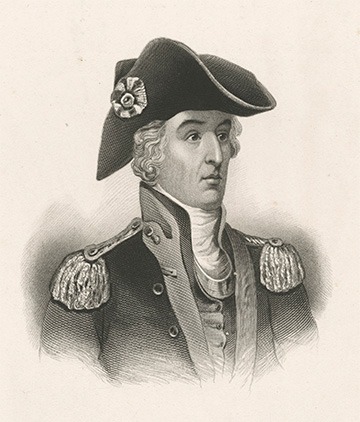
MARION COUNTY is named for General Francis Marion (1732-1795). Known as “The Swamp Fox,” he is considered one of the fathers of modern guerrilla warfare. One of the great heroes of the American Revolution, he rose from the rank of Captain in the South Carolina militia to Brigadier General in The Continental Army.

FAYETTE COUNTY is named for Marie-Joseph Paul Yves Roch Gilbert du Motier de Lafayette, better known as “The Marquis de Lafayette” (1757-1834). This young French military officer was like a son to George Washington. On December 24, 1824, the Alabama Legislature passed a resolution inviting Lafayette to visit our state and authorizing “any sums necessary from the State Treasury” to finance the event. The trip nearly bankrupted the State!
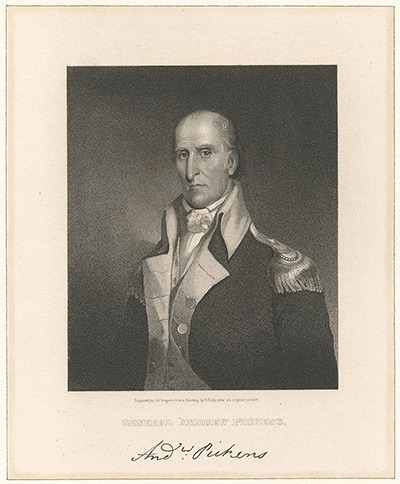
PICKENS COUNTY is named for General Andrew Pickens (1739-1817). Known as “The Wizard Owl,” he rose to the rank of Brigadier General under the South Carolina militia.
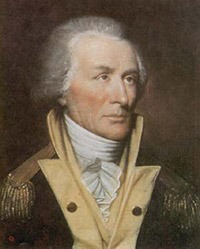
SUMTER COUNTY is named for Thomas Sumter (1734-1832), who was a Brigadier General in the South Carolina Continental Line.
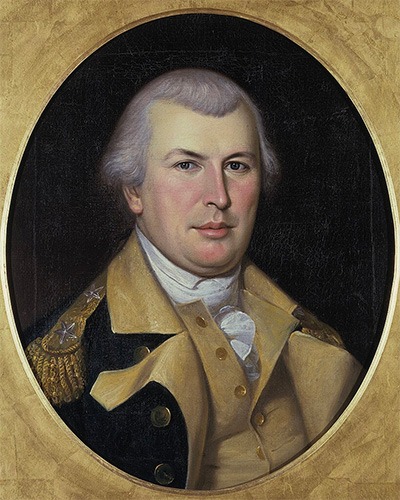
GREENE COUNTY is named for General Nathanael Greene (1742-1786), a Major General during The Revolutionary War, and Washington’s most gifted and dependable officer. His strategic command of the Southern Army laid the trap that ultimately forced British General Charles Lord Cornwallis’ surrender at Yorktown.

CLARKE COUNTY is named for John Clarke (1766-1832), who at age 16 rose to the rank of Captain in the Georgia militia during The Revolutionary War. He was later elected Governor of Georgia.

BALDWIN COUNTY is named for Abraham Baldwin (1754-1807), who served in the Continental Army and, eventually, the U.S. Senate. He was both a delegate to the Continental Congress and the Constitutional Convention from Georgia.
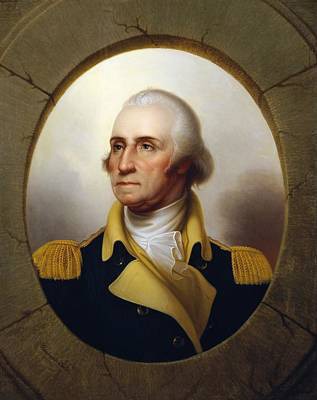
WASHINGTON COUNTY is named for General George Washington (1732-1799), the Father of Our Country. His leadership as Commander-in-Chief of the Continental Army, as President of the Constitutional Convention, and as President of the United States is unmatched in American history. We simply are not a nation today without George Washington.
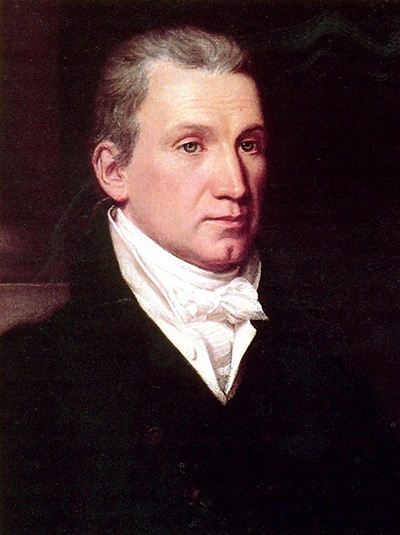
MONROE COUNTY is named for President James Monroe (1758-1831), who was a Lieutenant Colonel in the Continental Army. As an Aide-de-Camp to General Washington, he was at the Battle of Trenton and participated in the Crossing of the Delaware. He was also a delegate to the Constitutional Convention and the 5th President of the United States.
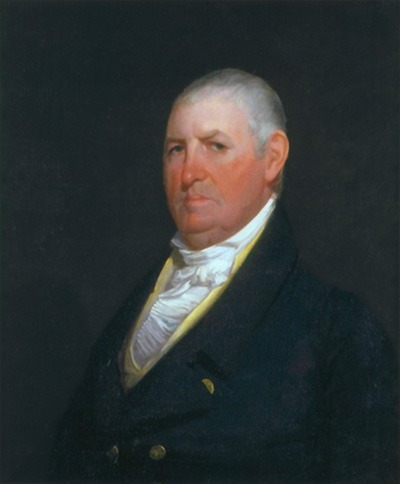
SHELBY COUNTY is named for Isaac Shelby (1750-1826). He was a hero at the Battle of Kings Mountain in the American Revolution and later served in the War of 1812 and became the first and fifth Governor of Kentucky.
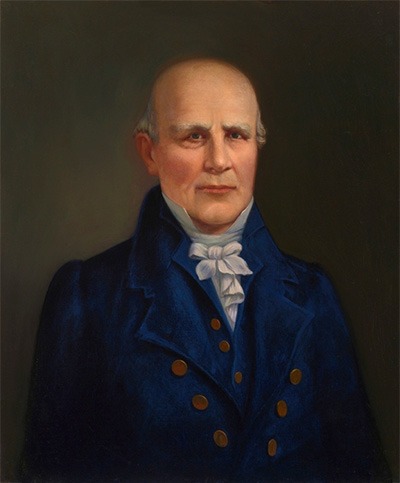
MACON COUNTY is named for Nathaniel Macon (1757-1837). He served in the Continental Army and later became Speaker of the U.S. House of Representatives.

HENRY COUNTY is named for Colonel Patrick Henry (1736-1799), who was one of the most influential advocates of American Independence. A Colonel in the 1st Virginia Regiment early in the war, he was also a delegate to the Continental Congresses, and the first post-colonial Governor of Virginia.

ELMORE COUNTY is named for General John Archer Elmore (1762-1834). He was in the Continental Army serving under Nathanael Greene in the Carolinas. He moved to Alabama in 1819 and was elected to the State Legislature. He is buried in Elmore County, Alabama.

JEFFERSON COUNTY is named for President Thomas Jefferson (1743-1826), who was the primary author of the Declaration of Independence and the author of the Virginia Statute of Religious Freedom.
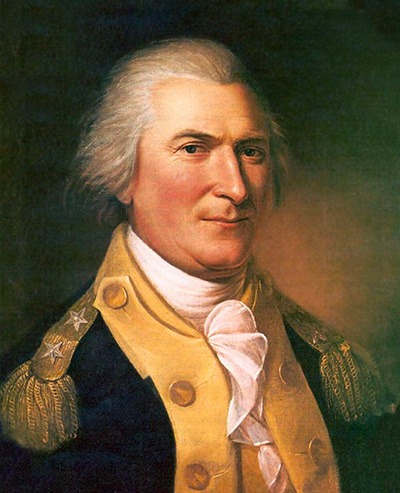
ST. CLAIR COUNTY is named for General Arthur St. Clair (1737-1818). Born in Scotland, he served in the British Army during the French and Indian War. During the American Revolution, he rose to the rank of Major General in the Continental Army. He later served as President of the Confederation Congress and as Governor of the Northwest Territory.

BLOUNT COUNTY is named for William Blount (1749-1800). He was a delegate to the Continental Congress and the Constitutional Convention from North Carolina. He also served as one of the first two U.S. Senators from Tennessee.
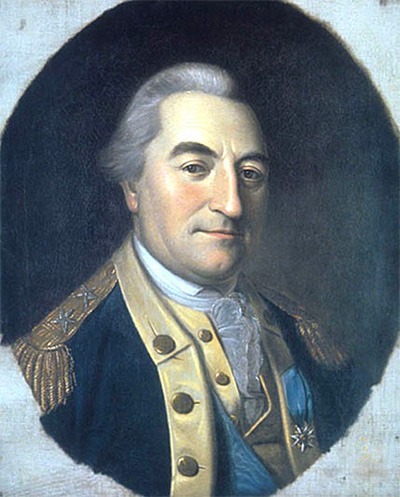
DEKALB COUNTY is named for Johann von Robais, Baron DeKalb (1721-1780). Born in present-day Germany, he came to America with Lafayette to join the American cause for Independence. He was with Washington at Valley Forge in 1777 and was killed at the Battle of Camden in South Carolina.

MARSHALL COUNTY is named for John Marshall (1755-1835). He served in the Continental Army, crossing the Delaware River with George Washington, and later became Chief Justice of the United States. He is one of the principal architects of our system of Constitutional law.

JACKSON COUNTY is named for President Andrew Jackson (1767-1845), 7th President of the United States. At age 13 he was a courier in the Revolution and was captured by the Redcoats, becoming the only future President to have ever been a Prisoner of War.

MADISON COUNTY is named for President James Madison (1751-1836). He was Commander of the Orange County militia in the Continental Army and is considered “the Father of the Constitution.” He was the first President to serve in Congress, where his leadership resulted in many of the basic laws of our country, including the Bill of Rights. He was the 4th President of the United States.

MORGAN COUNTY is named for General Daniel Morgan (1736-1802). He was one of the most gifted battlefield tacticians of the American Revolution. His skills were instrumental at the Battle of Saratoga, which proved to be the decisive event in causing France to enter the war. He also led troops at many other important battles, including the battle of Cowpens.
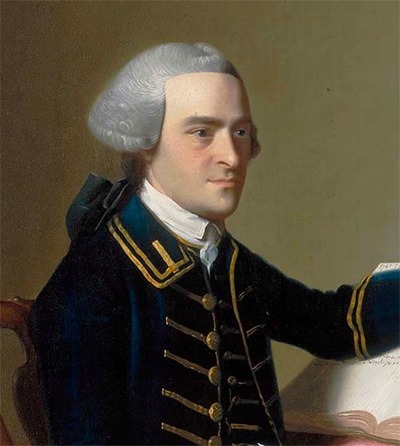
HANCOCK COUNTY was named for Massachusetts Governor John Hancock (1737-1793). He was an early leader in the Revolution and a signer of the Declaration of Independence. He also served as the President of the 2nd Continental Congress.
In 1780, Fort Charlotte, built 60 years before by the French, was under the control of the British. In support of the colonies, Spain had entered the war in 1779. On March 10, 1780, Spanish General Bernardo de Gálvez attacked the fort, seeking to control the important port town and thwart the British threat to its Louisiana colony.
For three days the battle raged until, on March 13, when the British surrendered, retreating to Pensacola. Gálvez had plans to follow and attack the British in Pensacola but was unable to raise reinforcements. Instead, on Jan. 7, 1781, British forces moved in to attempt to recapture Fort Charlotte in Mobile. The Brits were quickly defeated, again retreating to Pensacola.
Fort Charlotte, called Fort Conde under French rule and Fort Carlotta under Spanish rule, was demolished in the 1800s but a smaller replica of Fort Conde was built on its foundation and is now a tourist attraction.
*At the time of the battle, the land was not called Alabama. It was in West Florida.
The Revolutionary War monument at the American Village honoring the state’s patriots of the American Revolution
The Alabama SAR donated the Patriot Doors at the American Village Colonial Chapel, with brass plaques listing each patriot ancestor of SAR members.
The Daughters of the American Revolution (DAR) monument at the Fayette County Courthouse honoring participants in the American Revolution.
The DAR memorial honoring Revolutionary War patriots buried in Jefferson County.
The DAR monument honoring the 18 Revolutionary War soldiers who resided in Montgomery County.
The DAR monument in Veterans’ Park honoring Revolutionary War soldiers/patriots buried in Madison County.
Two monuments placed by The Sons of the Revolution to mark the Revolutionary War at Mobile – the Siege of Fort Condé and the burial ground at Spanish Fort
A monument to Spanish General Bernardo de Galvez, located in Baldwin County’s Centennial Park in Stockton. It recognizes the naval victories in Mobile and Spanish support for the American cause as a result of the French Alliance.
A memorial marker placed by the SAR honoring Jim Capers, one of the very few black men known to have served as a soldier in the Revolutionary War who is buried in Alabama.
A monument erected by the Clarke County Historical Society on the grounds of the Clarke County Museum honoring the 23 men from the county who fought in the American Revolution.
SAR planted an elm tree and placed a marker at the VA Hospital in memory of Revolutionary War soldiers; and a plaque in the Tuscaloosa County Courthouse naming the soldiers who lived and died in the county.
SAR and DAR placed a plaque at a monument in Capitol Park, in honor of the Revolutionary War soldiers who came to Tuscaloosa County.
SAR erected a monument in Ozark in honor of the Revolutionary War soldiers who settled in the county.
John Wade Keyes is believed to be the first Revolutionary War Veteran buried in Alabama. His grave is in the City Cemetery in Athens.

FRANKLIN COUNTY is named for Benjamin Franklin (1706-1790), signer of the Declaration of Independence and delegate to the 2nd Continental Congress and the Constitutional Convention. His diplomatic efforts secured French participation in the American Revolution. Twenty-three U.S. counties are named in his honor.

MARION COUNTY is named for General Francis Marion (1732-1795). Known as “The Swamp Fox,” he is considered one of the fathers of modern guerrilla warfare. One of the great heroes of the American Revolution, he rose from the rank of Captain in the South Carolina militia to Brigadier General in The Continental Army.

FAYETTE COUNTY is named for Marie-Joseph Paul Yves Roch Gilbert du Motier de Lafayette, better known as “The Marquis de Lafayette” (1757-1834). This young French military officer was like a son to George Washington. On December 24, 1824, the Alabama Legislature passed a resolution inviting Lafayette to visit our state and authorizing “any sums necessary from the State Treasury” to finance the event. The trip nearly bankrupted the State!

PICKENS COUNTY is named for General Andrew Pickens (1739-1817). Known as “The Wizard Owl,” he rose to the rank of Brigadier General under the South Carolina militia.

SUMTER COUNTY is named for Thomas Sumter (1734-1832), who was a Brigadier General in the South Carolina Continental Line.

GREENE COUNTY is named for General Nathanael Greene (1742-1786), a Major General during The Revolutionary War, and Washington’s most gifted and dependable officer. His strategic command of the Southern Army laid the trap that ultimately forced British General Charles Lord Cornwallis’ surrender at Yorktown.

CLARKE COUNTY is named for John Clarke (1766-1832), who at age 16 rose to the rank of Captain in the Georgia militia during The Revolutionary War. He was later elected Governor of Georgia.

BALDWIN COUNTY is named for Abraham Baldwin (1754-1807), who served in the Continental Army and, eventually, the U.S. Senate. He was both a delegate to the Continental Congress and the Constitutional Convention from Georgia.

WASHINGTON COUNTY is named for General George Washington (1732-1799), the Father of Our Country. His leadership as Commander-in-Chief of the Continental Army, as President of the Constitutional Convention, and as President of the United States is unmatched in American history. We simply are not a nation today without George Washington.

MONROE COUNTY is named for President James Monroe (1758-1831), who was a Lieutenant Colonel in the Continental Army. As an Aide-de-Camp to General Washington, he was at the Battle of Trenton and participated in the Crossing of the Delaware. He was also a delegate to the Constitutional Convention and the 5th President of the United States.

SHELBY COUNTY is named for Isaac Shelby (1750-1826). He was a hero at the Battle of Kings Mountain in the American Revolution and later served in the War of 1812 and became the first and fifth Governor of Kentucky.

MACON COUNTY is named for Nathaniel Macon (1757-1837). He served in the Continental Army and later became Speaker of the U.S. House of Representatives.

HENRY COUNTY is named for Colonel Patrick Henry (1736-1799), who was one of the most influential advocates of American Independence. A Colonel in the 1st Virginia Regiment early in the war, he was also a delegate to the Continental Congresses, and the first post-colonial Governor of Virginia.

ELMORE COUNTY is named for General John Archer Elmore (1762-1834). He was in the Continental Army serving under Nathanael Greene in the Carolinas. He moved to Alabama in 1819 and was elected to the State Legislature. He is buried in Elmore County, Alabama.

JEFFERSON COUNTY is named for President Thomas Jefferson (1743-1826), who was the primary author of the Declaration of Independence and the author of the Virginia Statute of Religious Freedom.

ST. CLAIR COUNTY is named for General Arthur St. Clair (1737-1818). Born in Scotland, he served in the British Army during the French and Indian War. During the American Revolution, he rose to the rank of Major General in the Continental Army. He later served as President of the Confederation Congress and as Governor of the Northwest Territory.

BLOUNT COUNTY is named for William Blount (1749-1800). He was a delegate to the Continental Congress and the Constitutional Convention from North Carolina. He also served as one of the first two U.S. Senators from Tennessee.

DEKALB COUNTY is named for Johann von Robais, Baron DeKalb (1721-1780). Born in present-day Germany, he came to America with Lafayette to join the American cause for Independence. He was with Washington at Valley Forge in 1777 and was killed at the Battle of Camden in South Carolina.

MARSHALL COUNTY is named for John Marshall (1755-1835). He served in the Continental Army, crossing the Delaware River with George Washington, and later became Chief Justice of the United States. He is one of the principal architects of our system of Constitutional law.

JACKSON COUNTY is named for President Andrew Jackson (1767-1845), 7th President of the United States. At age 13 he was a courier in the Revolution and was captured by the Redcoats, becoming the only future President to have ever been a Prisoner of War.

MADISON COUNTY is named for President James Madison (1751-1836). He was Commander of the Orange County militia in the Continental Army and is considered “the Father of the Constitution.” He was the first President to serve in Congress, where his leadership resulted in many of the basic laws of our country, including the Bill of Rights. He was the 4th President of the United States.

MORGAN COUNTY is named for General Daniel Morgan (1736-1802). He was one of the most gifted battlefield tacticians of the American Revolution. His skills were instrumental at the Battle of Saratoga, which proved to be the decisive event in causing France to enter the war. He also led troops at many other important battles, including the battle of Cowpens.

HANCOCK COUNTY was named for Massachusetts Governor John Hancock (1737-1793). He was an early leader in the Revolution and a signer of the Declaration of Independence. He also served as the President of the 2nd Continental Congress.